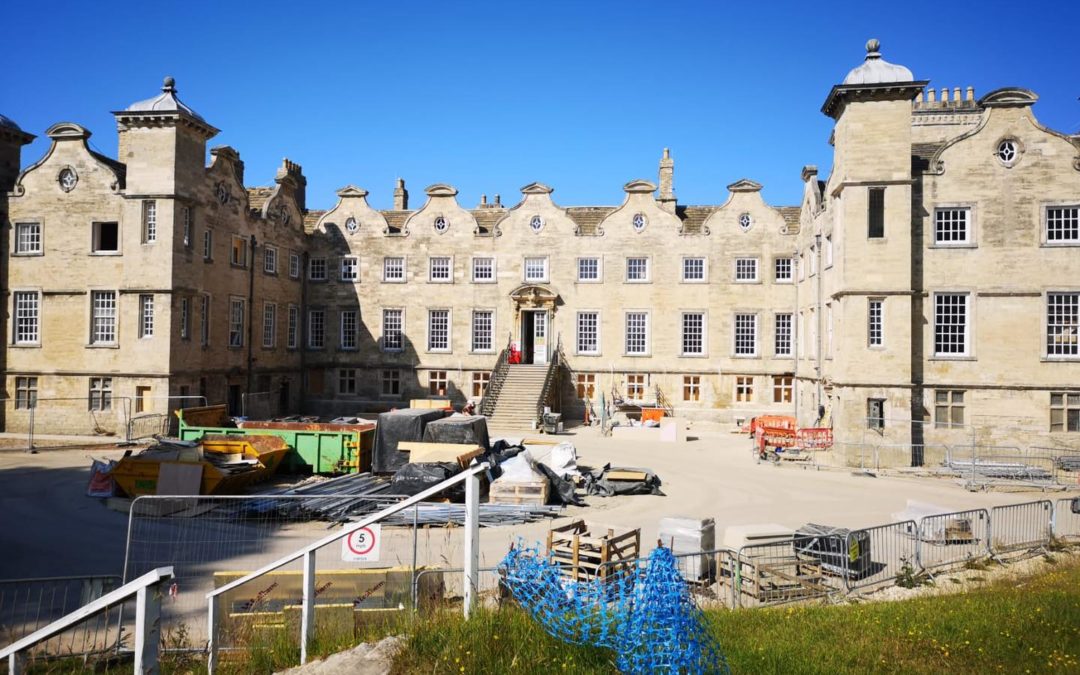Nestled within the idyllic English countryside, Ledston Hall stands as a testament to the architectural grandeur of past centuries. This magnificent Grade I listed building, with its origins tracing back to the 12th century as a grange and chapel built by the monks of Pontefract Abbey, has recently undergone a remarkable transformation. Once listed on Historic England’s ‘Heritage at Risk’ register, the hall faced significant threats to its longevity, necessitating a complex restoration effort. Enter TECL, a leader in heritage preservation, whose expertise in fire stopping was pivotal in ensuring the hall’s revival. Collaborating closely with Simpson (York) Limited, TECL executed critical fire stopping measures, including the installation of ablative batt and mastic to open penetrations, as well as 30 and 60-minute fire curtains, ultimately securing the future of this historic treasure.
Ledston Hall’s Historical Significance
Ledston Hall stands as a testament to England’s rich architectural heritage, embodying centuries of history within its walls. This section explores the hall’s prestigious status and its journey through time.
A Magnificent Grade I Listed Hall
Ledston Hall’s Grade I listed status places it among the most historically significant buildings in England. This designation, awarded to only 2.5% of listed buildings, recognises the hall’s exceptional architectural and historical importance.
The hall’s grandeur is evident in its imposing facade and meticulously preserved interiors. Its status as a Grade I listed building ensures that any alterations or restorations must adhere to strict guidelines, preserving its historical integrity for future generations.
Visitors to Ledston Hall are often struck by the seamless blend of architectural styles, reflecting different periods of its long history. This unique characteristic makes it a valuable resource for historians and architecture enthusiasts alike.
Long and Rich Historical Tapestry
Ledston Hall’s history spans nearly a millennium, with its origins dating back to the 12th century. Initially established as a grange and chapel by the monks of Pontefract Abbey around 1200, the site has evolved significantly over the centuries.
Throughout its history, Ledston Hall has been home to several notable figures, including Lady Elizabeth Hastings in the 18th century. Each owner left their mark on the property, contributing to its diverse architectural features and rich historical narrative.
The hall’s evolution reflects broader changes in English society, from medieval religious institutions to the grand country estates of the nobility. This makes Ledston Hall not just a building, but a living chronicle of English history.
The Urgency of Restoration
Despite its historical significance, Ledston Hall faced serious threats to its longevity in recent years. This section delves into the challenges that necessitated urgent restoration efforts.
Heritage at Risk Register Concerns
Ledston Hall’s inclusion on Historic England’s ‘Heritage at Risk’ register was a stark wake-up call. This designation highlighted the urgent need for intervention to prevent irreversible damage to this historical treasure.
The ‘Heritage at Risk’ register serves as a critical tool in identifying and prioritising heritage sites in danger of decay or loss. For Ledston Hall, this listing brought attention to structural issues, decay, and the need for comprehensive restoration work.
Being on this register also opened up potential avenues for funding and expert support, crucial for undertaking the complex restoration process required for such a significant historical property.
Complex Refurbishment Challenges
Restoring a Grade I listed building like Ledston Hall presents unique challenges that go beyond typical renovation projects. The complexity lies in balancing modern safety requirements with historical preservation.
One of the primary challenges was implementing fire safety measures without compromising the hall’s historical integrity. This required specialised knowledge and techniques, particularly in areas like fire stopping and the installation of fire doors.
The refurbishment also needed to address structural issues while preserving original features. This delicate balance demanded a team of experts skilled in both historical restoration and modern construction techniques.
TECL’s Critical Contribution
In the face of these complex challenges, TECL’s expertise in heritage preservation and fire safety played a crucial role in Ledston Hall’s restoration. This section highlights the specialised techniques and collaborative efforts that made this project a success.
Specialised Fire Stopping Techniques
TECL’s approach to fire stopping at Ledston Hall exemplifies the critical role of fire stopping in heritage preservation. Their work was essential in bringing the building up to modern safety standards while respecting its historical significance.
The team employed advanced techniques, such as installing ablative batts and mastic to seal open penetrations. This method effectively creates fire-resistant barriers without damaging the original structure.
TECL also installed 30 and 60-minute fire curtains, providing crucial protection in key areas of the building. These modern safety features were seamlessly integrated, maintaining the hall’s historical aesthetic while significantly enhancing its fire safety.
Partnership with Simpson (York) Limited
The successful restoration of Ledston Hall was a testament to effective collaboration. TECL’s partnership with Simpson (York) Limited exemplified how specialised expertise can complement general restoration work.
This collaboration ensured that fire safety measures were integrated seamlessly into the overall restoration plan. It allowed for a holistic approach, addressing both the preservation of historical features and the implementation of modern safety standards.
The synergy between TECL’s fire stopping expertise and Simpson (York) Limited’s restoration skills was crucial in navigating the complex requirements of the Regulatory Reform (Fire Safety) Order 2005 and other relevant building regulations.
